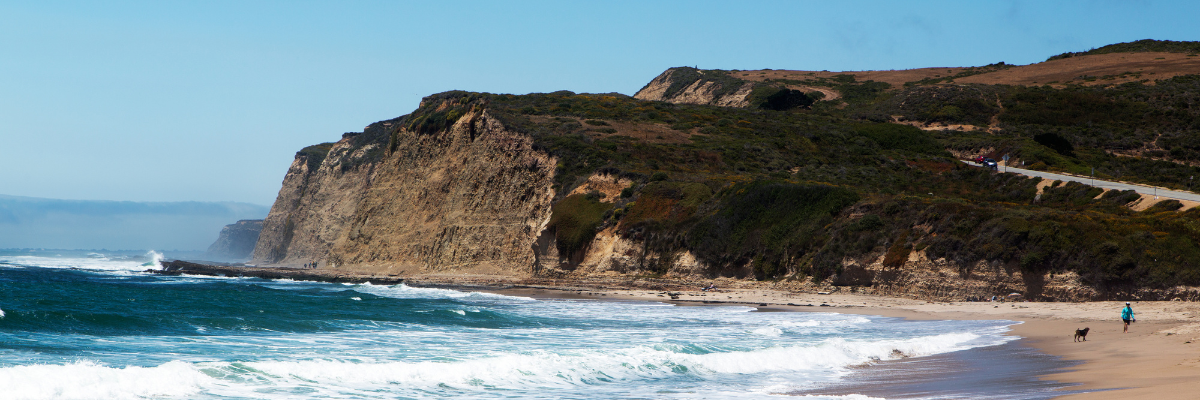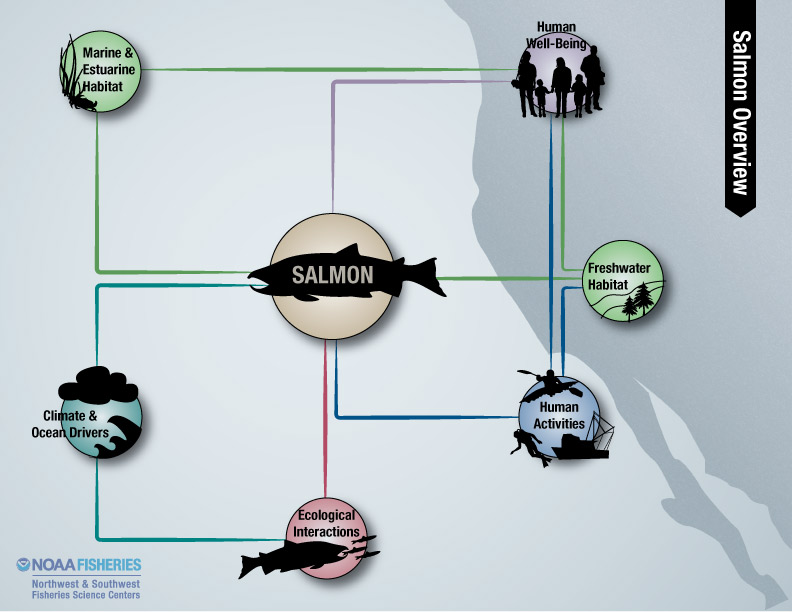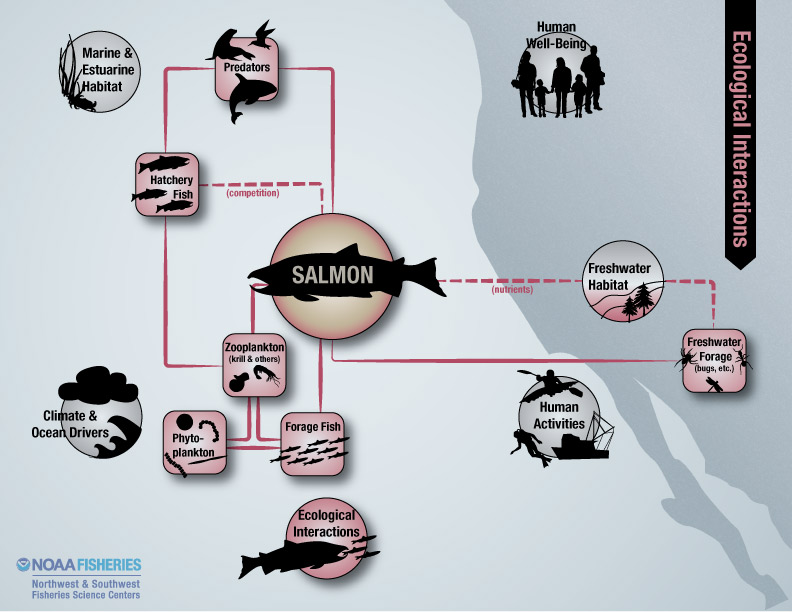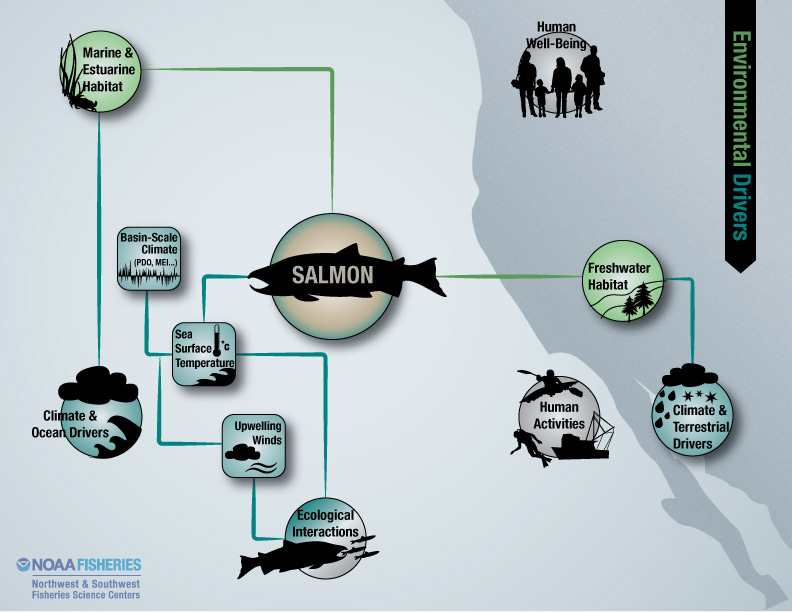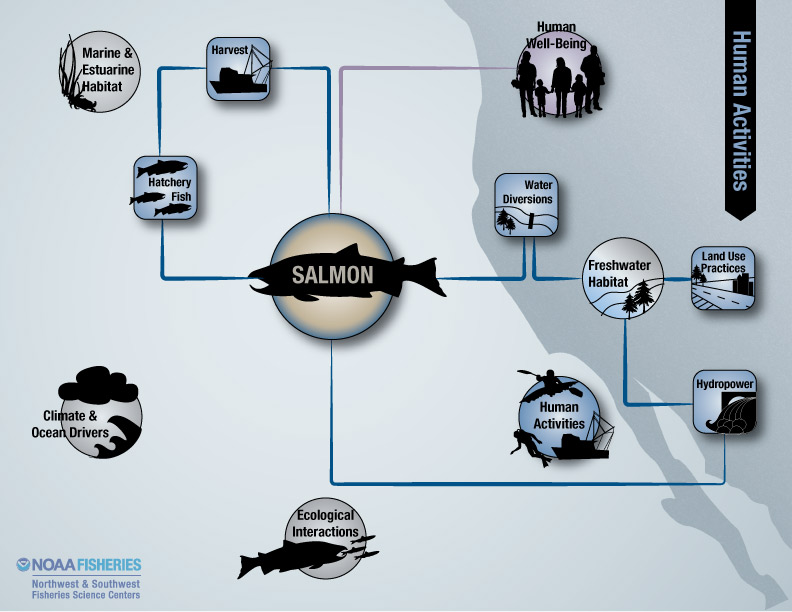Pacific salmon and steelhead (Oncorhynchus spp.) are iconic members of North Pacific rim ecosystems. They have a dynamic life cycle that includes time in freshwater and marine habitats, and they connect these ecosystems through extensive migrations up to 1500 km.
Historically, salmon supported extensive native harvest along the U.S. West Coast, and in recent times, they have been the focus of large commercial and recreational fisheries. NOAA Fisheries has listed 28 species of salmon and steelhead on the West Coast under the US Endangered Species Act.
